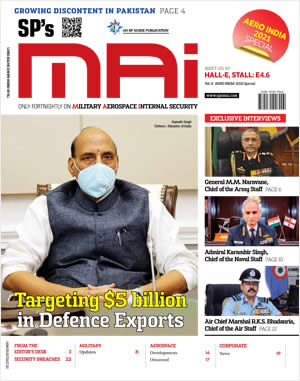INDIAN ARMED FORCES CHIEFS ON OUR RELENTLESS AND FOCUSED PUBLISHING EFFORTS
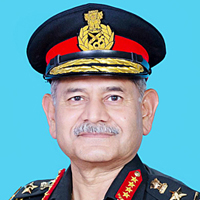
The insightful articles, inspiring narrations and analytical perspectives presented by the Editorial Team, establish an alluring connect with the reader. My compliments and best wishes to SP Guide Publications.

"Over the past 60 years, the growth of SP Guide Publications has mirrored the rising stature of Indian Navy. Its well-researched and informative magazines on Defence and Aerospace sector have served to shape an educated opinion of our military personnel, policy makers and the public alike. I wish SP's Publication team continued success, fair winds and following seas in all future endeavour!"

Since, its inception in 1964, SP Guide Publications has consistently demonstrated commitment to high-quality journalism in the aerospace and defence sectors, earning a well-deserved reputation as Asia's largest media house in this domain. I wish SP Guide Publications continued success in its pursuit of excellence.
- Prime Minister Modi Visits Punjab’s Adampur Air Base, Interacts with Airmen after Successful ‘Operation Sindoor’; Stern Message to Pakistan
- The layered Air Defence systems that worked superbly, the key element of Operation Sindoor
- Operation Sindoor | Day 2 DGMOs Briefing
- Operation Sindoor: India strikes back with Precision and Purpose
- Operation Sindoor: Resolute yet Restrained
- India’s Operation Sindoor Sends a Clear Message to Terror and the World – ‘ZERO TOLERANCE’
- Japan and India set forth a defence cooperation consultancy framework, talks on tank and jet engines
- Terrorist Attack in Pahalgam in Kashmir: Unfolding a long surgical war against PAK
- Lt General Pratik Sharma takes over Command of Indian Army's Northern Command
AMCA takes off; MoD calls for industrial collaboration, equal partnership for private & public on a competitive basis
India's 5th generation combat jet, the Advanced Medium Combat Aircraft AMCA, is finally set forth as Defence Minister Rajnath Singh approved the Programme Execution Model equal partnership for private & public on a competitive basis. Expression of Interest (EoI) for the AMCA Development Phase will be announced soon.
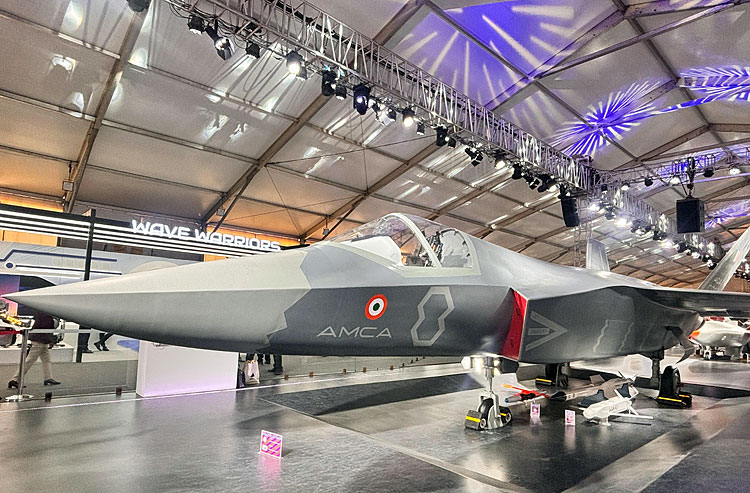
In a significant push towards enhancing India's indigenous defence capabilities and fostering a robust domestic aerospace industrial ecosystem, Defence Minister Rajnath Singh has approved the Advanced Medium Combat Aircraft (AMCA) Programme Execution Model. The Aeronautical Development Agency (ADA) is set to execute the programme through an Industry partnership. ADA will shortly issue an Expression of Interest (EoI) for the AMCA Development Phase.
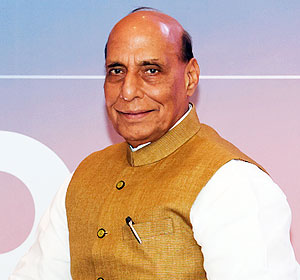
In its statement, the Ministry of Defence (MoD) has explicitly stated that the Execution Model approach provides "equal opportunities to both private and public sectors on a competitive basis". In modalities, the industry can bid either independently or as a joint venture or as consortia. The entity/bidder should be an Indian company compliant with the laws and regulations of the country.
Defence Minister Rajnath Singh has approved the Advanced Medium Combat Aircraft (AMCA) Programme Execution Model.
India's Advanced Medium Combat Aircraft (AMCA) programme stands as a testament to the nation's aspirations in aerospace self-reliance and strategic autonomy. Spearheaded by the Aeronautical Development Agency (ADA), the AMCA aims to deliver a fifth-generation stealth fighter that not only meets the Indian Air Force's requirements but also positions India as a formidable player in the global defence arena.
Strategic shift: Development with Private Sector Participation
The AMCA's development is progressing through a planned roadmap. The design phase was completed in 2023, with prototype development receiving approval from the Cabinet Committee on Security (CCS) in March 2024.
However, the first prototype, which is expected to roll out in 2027, and flight trials commencing in late 2028 will see some delay on multiple accounts, beginning with aeroengine. A total of five prototypes are planned, with the first three dedicated to developmental trials and the remaining two for weapon integration tests.
This is an important step towards harnessing the indigenous expertise, capability and capacity to develop the AMCA prototype, which will be a major milestone in building a robust supply chain in the aerospace sector.
The AMCA's development is progressing through a planned roadmap. The design phase was completed in 2023, with prototype development receiving approval from the Cabinet Committee on Security (CCS) in March 2024.
Now, the thrust towards private sector involvement in defence manufacturing is fundamental to achieving self-reliance, especially for such advanced platforms. The AMCA programme is adopting a collaborative approach. A Special Purpose Vehicle (SPV) comprising ADA, Hindustan Aeronautics Limited (HAL), and private industry players is being established to oversee the development and production of the AMCA. This model aims to leverage the strengths of both public and private sectors, fostering innovation and efficiency in the programme's execution.
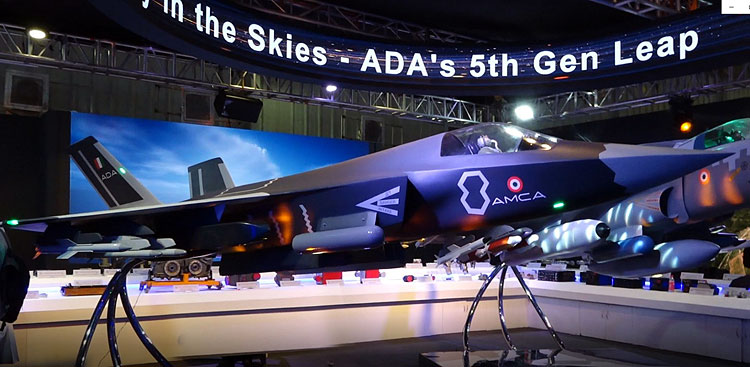
Engine Selection: A Key Decision
A critical aspect of the AMCA's performance hinges on its propulsion system. The Defence Research and Development Organisation (DRDO) is in advanced discussions with global engine manufacturers – General Electric (GE), Rolls-Royce, and Safran–to co-develop a 110kN thrust engine tailored for the AMCA. The final decision is anticipated by the end of 2025, with considerations focusing on technology transfer, cost, and strategic alignment.
The AMCA programme is adopting a collaborative approach. A Special Purpose Vehicle (SPV) comprising ADA, Hindustan Aeronautics Limited (HAL), and private industry players is being established to oversee the development and production of the AMCA.
GE has proposed leveraging its F414 engine, which will also power the Tejas Mk-2, for the AMCA. However, the offer includes limited technology transfer, with 80 per cent ToT as agreed during Prime Minister Modi's visit to the US. There are challenges around the US export controls. In contrast, Rolls-Royce has emphasised a co-creation model, offering full intellectual property rights to India, thereby aligning with the 'Atmanirbhar Bharat' initiative.
Safran, which already supports Indian military helicopters, has proposed a co-development model of higher thrust with complete IP control by India. Safran's experience in the Indian defence sector is well integrated, and the French company presented a proposal for a new 110kN thrust engine, coupled with a commitment to establish a centre of excellence in gas turbine technology in India. Already, the Indian Air Force is a longstanding customer of French jet fighters and engines. India operates M53-powered Mirage 2000, and Rafale equipped with the M88 engine.
The Defence Research and Development Organisation (DRDO) is in advanced discussions with global engine manufacturers—General Electric (GE), Rolls-Royce, and Safran—to co-develop a 110kN thrust engine tailored for the AMCA.
However, there will be significant budgetary challenges for the engine as estimated it will require R&D investment close to $4 billion to $5 billion, that's ₹40,000 crore to 50,000 crore.
The development of the indigenous engine is critical against the growing Chinese buildup of fighter jets in quantity as well as quality, based on their newly developed engine WS-10, powering the latest J-10C.
Budget Allocation and Funding Mechanism
The AMCA programme has received a significant boost with the CCS approving approximately ₹15,000 crore for its Phase-I development. This funding is earmarked for the design and prototype development. However, the engine development is expected to secure separate funding approval, given its complexity and critical importance to the programme's success.
The AMCA programme represents more than just the development of a new fighter aircraft; it embodies India's commitment to achieving self-reliance in critical and advanced defence technology and enhancing its strategic capabilities. The decisions made in the coming months, particularly regarding engine selection and private sector participation, will significantly influence the trajectory of the AMCA and India's position in the global defence architecture.
Manish Kumar Jha is a Consulting & Contributing Editor for SP's Aviation, SP's Land Forces and SP's Naval Forces and a security expert. He writes on national security, military technology, strategic affairs & policies.





